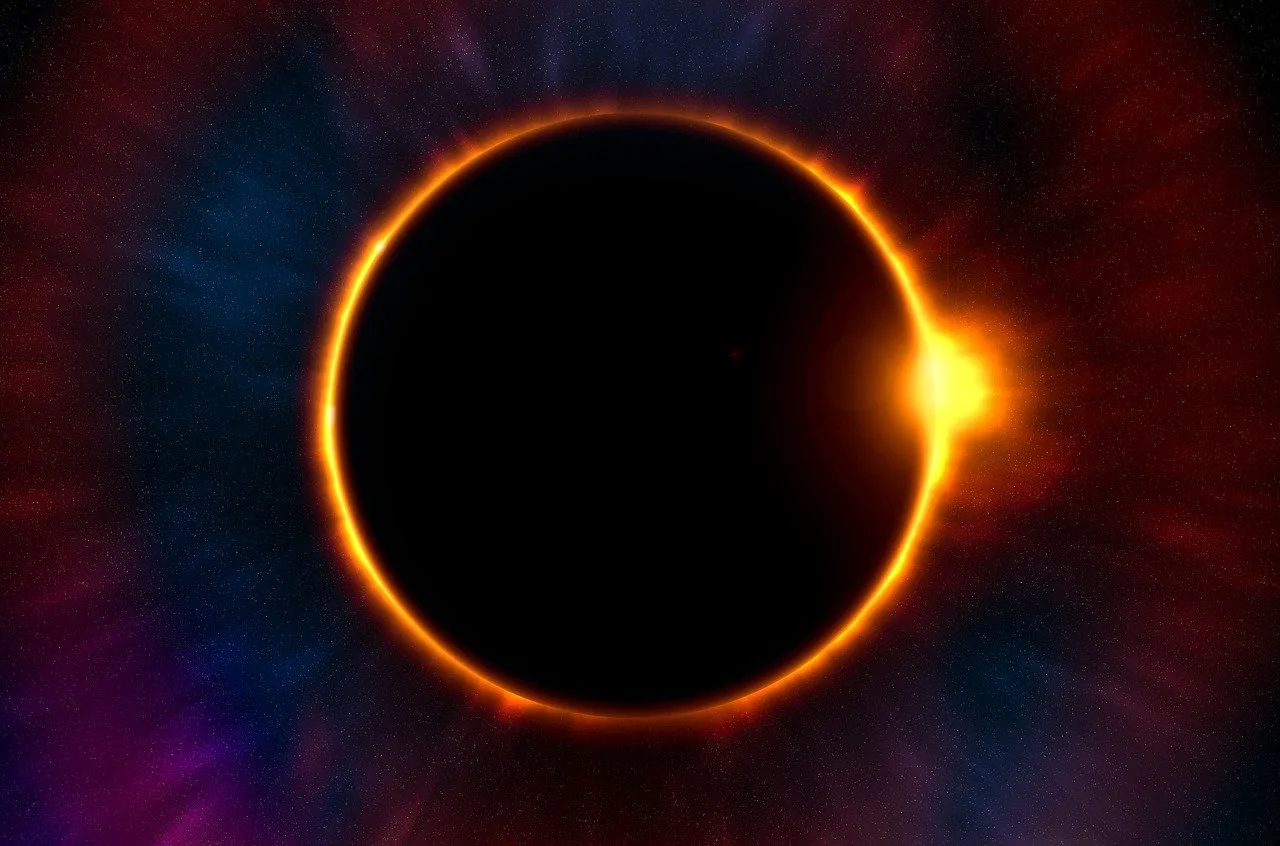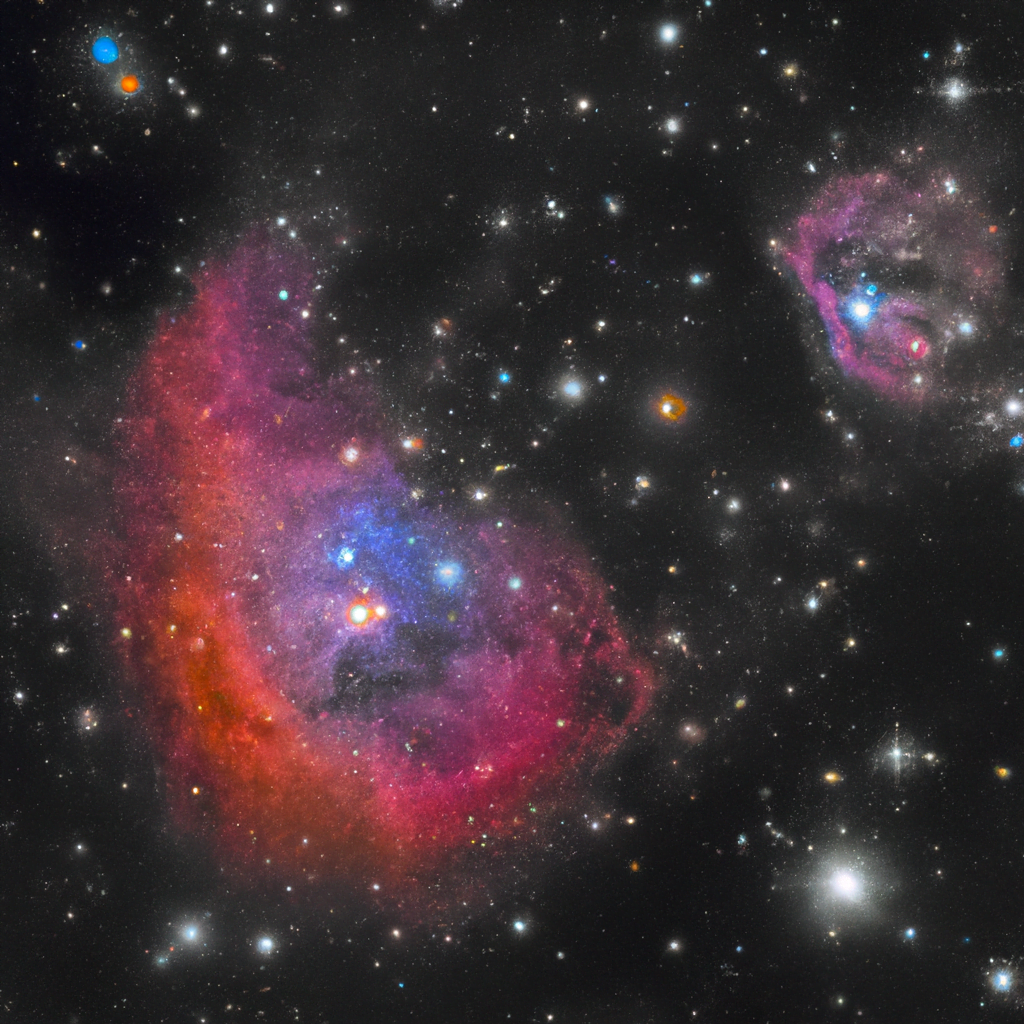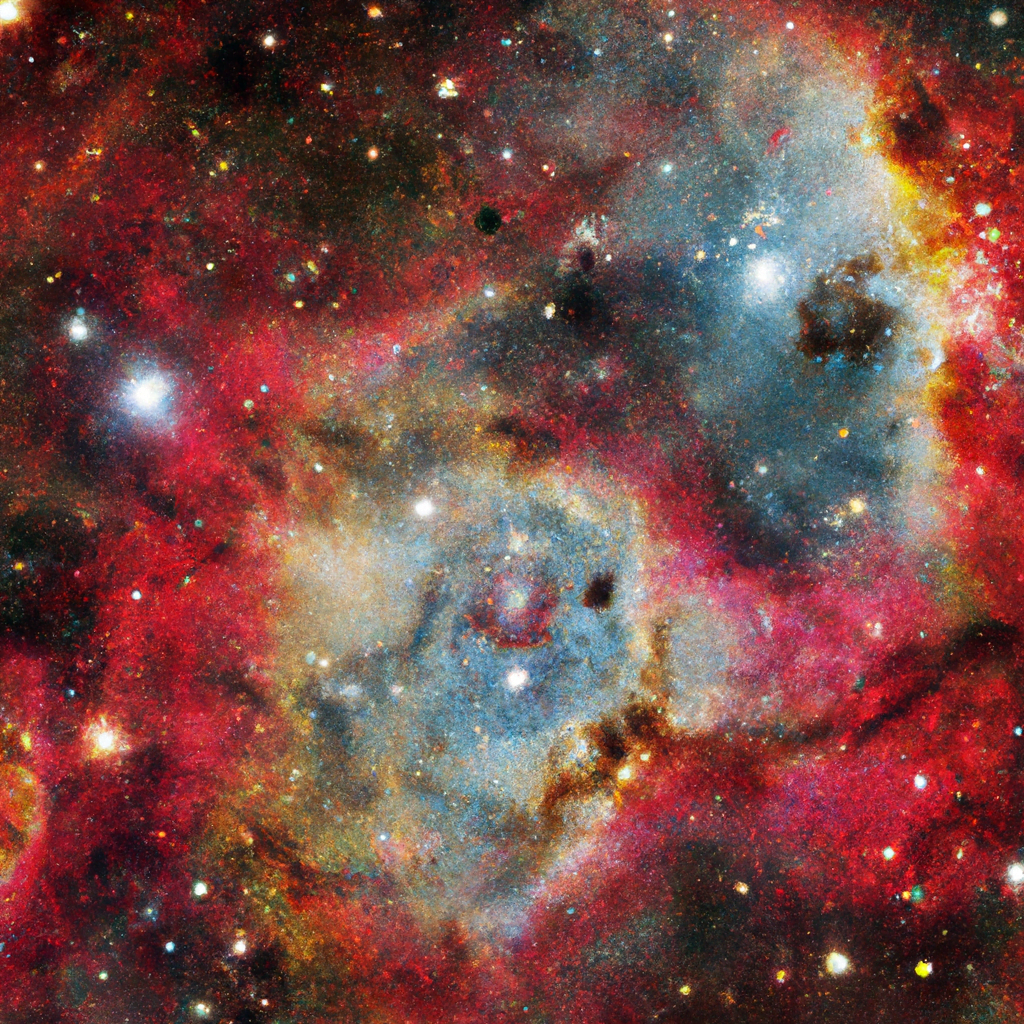Imagine gazing up at the night sky, with a telescope in hand, and wondering about the mysteries that lie beyond our reach. As you ponder the vastness of the universe, questions start to arise. Can you witness the vibrant hues of nebulae and galaxies through the lens of a telescope? Can you capture the ethereal beauty of these celestial wonders in all their colorful glory? In this article, we will unravel the truth behind this captivating question and explore the fascinating world of colors in nebulae and galaxies. Get ready to embark on an awe-inspiring journey through the cosmos!

Table of Contents
Understanding Nebulae and Galaxies
Definition of Nebulae and Galaxies
Nebulae are vast clouds of gas and dust scattered throughout space. They are the birthplaces of stars and can range in size from just a few light-years across to hundreds of light-years. Galaxies, on the other hand, are large systems of stars, gas, and dust held together by gravity. They come in various shapes and sizes, and they contain billions or even trillions of stars.
Types of Nebulae
There are three main types of nebulae: emission nebulae, reflection nebulae, and dark nebulae. Emission nebulae, such as the famous Orion Nebula, are composed of ionized gases that emit light of various colors. Reflection nebulae, like the Pleiades, do not emit light themselves but instead reflect light from nearby stars. Dark nebulae are dense clouds of dust and gas that block the light from stars behind them.
Types of Galaxies
There are three primary types of galaxies: spiral galaxies, elliptical galaxies, and irregular galaxies. Spiral galaxies, like our own Milky Way, have a distinct disk-like shape with swirling arms containing stars, gas, and dust. Elliptical galaxies, as the name suggests, have an ellipsoidal shape and contain mostly older stars with little gas and dust. Irregular galaxies do not have a well-defined shape and often result from the gravitational interactions between other galaxies.
How Telescopes Work
Optical Design of Telescopes
Telescopes work by collecting and focusing light to produce magnified images of celestial objects. The optical design of a telescope plays a crucial role in determining the quality of the image. There are different types of telescope designs, including refracting telescopes that use lenses and reflecting telescopes that use mirrors to gather and focus light.
Light Gathering and Magnification
One of the essential functions of a telescope is to gather as much light as possible from distant objects. The larger the aperture of a telescope, the more light it can collect, enabling the observation of fainter objects. Magnification, on the other hand, refers to the ability of a telescope to enlarge the apparent size of an object. It is determined by the combination of the telescope’s focal length and the eyepiece being used.
Filters and Wavelengths
Telescopes can also use filters to selectively allow certain wavelengths of light to pass through while blocking others. This enables astronomers to observe specific features or phenomena that are associated with particular wavelengths. Filters can enhance the visibility of specific details or highlight certain colors in nebulae and galaxies, providing valuable information about their composition and structure.
Capturing Color with Telescopes
The Concept of False Color Imaging
Although telescopes can capture light in different colors, the human eye has limitations when it comes to perceiving these colors in the same way the camera does. Therefore, astronomers often use a technique called false color imaging to represent the captured data. This technique assigns different colors to different wavelengths of light, allowing scientists to distinguish between objects and features that may not be visible to the naked eye.
Multispectral Imaging
Multispectral imaging involves the capturing of images in multiple specific wavelengths or narrow bands of the electromagnetic spectrum. By combining these images, astronomers can create a composite image that reveals unique information about the object. This technique is particularly useful in studying the composition and temperature variations within nebulae and galaxies.
Color Filters
Color filters are optical filters that transmit specific wavelengths of light while blocking others. They can be used with telescopes to enhance or isolate certain colors in nebulae and galaxies. For example, a red filter can enhance the visibility of hydrogen-alpha emissions, which are common in many nebulae. Similarly, a blue filter may highlight regions where young, hot stars are located.
Color in Nebulae
Emission Nebulae
Emission nebulae are known for their vivid and diverse colors. These nebulae are primarily made up of ionized gases, often hydrogen, which emit light of different colors when energized by nearby stars. The colors observed in emission nebulae can range from deep reds and pinks, associated with hydrogen-alpha emissions, to vibrant blues and greens, associated with oxygen and nitrogen ions.
Reflection Nebulae
Unlike emission nebulae, reflection nebulae do not emit light themselves but instead reflect the light from nearby stars. As a result, their colors are often more subtle and can appear bluish. The reflected light undergoes scattering, causing the blue light to be more visible to our eyes. The famous Pleiades star cluster is an excellent example of a reflection nebulae with its blueish hue.
Dark Nebulae
Dark nebulae, as the name implies, appear dark against the background of stars and nebulae. They are dense clouds of gas and dust that block the light from stars located behind them. Although they may not exhibit vibrant colors like emission or reflection nebulae, their presence can create contrast and accentuate the colors of other surrounding celestial objects.

Color in Galaxies
Spiral Galaxies
Spiral galaxies, such as the iconic Andromeda Galaxy, can exhibit a wide range of colors. The spiral arms of these galaxies contain regions of active star formation, where young, hot stars are born. These young stars emit blue light, giving the spiral arms a bluish color. However, the central bulges of spiral galaxies often contain older stars, which emit a redder light, creating a contrasting color palette within the galaxy.
Elliptical Galaxies
Unlike spiral galaxies, elliptical galaxies are predominantly composed of older stars with little gas and dust. As a result, their colors tend to be reddish or yellowish. The lack of ongoing star formation in elliptical galaxies means there are fewer young, hot stars emitting blue light. Instead, the dominant color in these galaxies comes from aging stars that emit a redder light.
Irregular Galaxies
Irregular galaxies, as the name suggests, do not have a well-defined shape or structure. They often exhibit a mix of colors, as they can contain regions of active star formation alongside older stars. The color palette in irregular galaxies can vary widely, depending on the balance between these two types of stellar populations.
Common Colors Found
Red and Pink
Red and pink colors are commonly associated with hydrogen-alpha emissions, which are prevalent in many nebulae. The presence of ionized hydrogen gas in the vicinity of young, hot stars can give rise to these warm and vibrant colors. These colors are often seen in emission nebulae, such as the famous Rosette Nebula.
Blue and Cyan
Blue and cyan colors are frequently observed in reflection nebulae and regions of active star formation in galaxies. Young, hot stars emit blue light, and when combined with the scattering of longer wavelength light by dust particles, these regions can exhibit a striking blue or cyan hue. Examples of blue nebulae include the blue reflection component of the Trifid Nebula.
Yellow and Green
Yellow and green colors can arise from a combination of factors, including the presence of older stars emitting reddish light and ionized oxygen and sulfur emissions in nebulae. These colors can be found in various celestial objects, such as the greenish glow of the Ring Nebula, which is caused by ionized oxygen.

Interpreting Colors
Element Abundance and Ionization
The colors observed in nebulae and galaxies can provide insights into their chemical composition and the presence of specific elements. For example, the red color associated with hydrogen-alpha emissions indicates the abundance of ionized hydrogen gas. Likewise, the presence of ionized oxygen or sulfur can give rise to green or yellow hues, respectively.
Dust and Scattering
The presence of dust particles in nebulae and galaxies can significantly influence the observed colors. Dust scatters shorter wavelength light more effectively, causing regions with young, hot stars to appear bluer. Additionally, the absorption and scattering of light by dust can create a reddening effect, making distant objects appear more red than they actually are.
Star Formation and Stellar Populations
The colors observed in galaxies can provide valuable information about their star formation history and the ages of their stellar populations. Newer galaxies with ongoing star formation tend to exhibit vivid colors due to the presence of young, hot stars. Older galaxies, which have exhausted their supply of gas and dust, often appear redder as their stellar populations consist mainly of older, cooler stars.
Challenges in Observing Color
Human Eye Sensitivity
The human eye has limitations when it comes to perceiving colors in faint, distant objects. Colors that appear vibrant in photographs taken with telescopes may appear more subtle or even monochromatic when viewed directly through an eyepiece. Despite these limitations, telescopes equipped with color filters and advanced imaging techniques allow astronomers to reveal the true colors of celestial objects.
Light Pollution
Light pollution from artificial sources, such as streetlights and cities, can significantly impact the observation of faint colors in nebulae and galaxies. The scattered light from human-made sources tends to drown out the faint emissions from celestial objects, making it difficult to see and appreciate their true colors. Observing from dark sky locations or using specialized filters can help mitigate the effects of light pollution.
Image Processing and Calibration
Obtaining accurate and true-to-life colors from telescope images involves careful image processing and calibration. Various technical factors, such as the sensitivity of camera sensors and the spectral response of filters, can introduce biases in the recorded colors. Scientists utilize calibration techniques to ensure the colors in the final images are as faithful as possible to the actual colors observed in the nebulae and galaxies.

Great Nebulae and Galaxy Regions to Observe
Orion Nebula (M42)
The Orion Nebula is one of the most well-known and easily observable nebulae in the night sky. Located in the constellation Orion, it is visible to the naked eye as a fuzzy patch below the three bright stars forming Orion’s Belt. With a telescope, its intricate details and stunning colors become apparent, showcasing a mix of red, pink, and blue hues.
Andromeda Galaxy (M31)
The Andromeda Galaxy, also known as M31, is the closest spiral galaxy to our own Milky Way. It can be seen with the naked eye on clear, dark nights. Despite its distance of about 2.5 million light-years, telescopes can reveal its vast spiral structure and subtle color variations. The central bulge tends to be more reddish, while the spiral arms contain bluish regions associated with ongoing star formation.
Carina Nebula (NGC 3372)
The Carina Nebula, located in the constellation Carina, is a massive stellar nursery. It is a region of active star formation, featuring stunning colors and intricate structures. With a telescope, observers can witness the intense red glow of hydrogen-alpha emissions, the subtle greens of ionized oxygen, and the contrasting blues of reflection nebulae.
Conclusion
While our naked eyes may not always perceive the vibrant colors present in nebulae and galaxies, telescopes equipped with advanced imaging techniques allow us to see and appreciate the true beauty of the cosmos. From the vivid reds and pinks of emission nebulae to the striking blues and cyans of reflection nebulae, the universe is a colorful and mesmerizing place. By understanding the various factors that influence the colors observed, astronomers can unravel the mysteries and complexities of the celestial objects that surround us. So, the next time you gaze at the night sky through a telescope, remember to revel in the magnificent colors that paint our universe.

